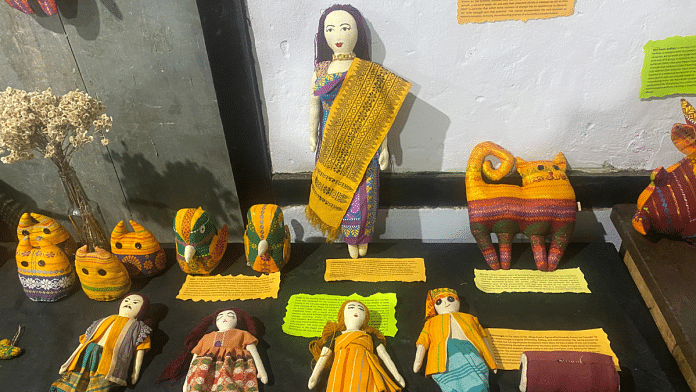Bongaigaon, Assam: Kirat Brahma was four years old when an astrologer predicted he would grow up to be an engineer. At his home in Rangapani, a Bodo village in Assam’s Bongaigaon district around 7 kilometres from the Bhutan border, his family was excited. As there were no proper schools nearby at the time, they sent him off to live with his uncle in Kokrajhar. Kirat became only the third person from his village to have studied in an English-medium school.
Holed up in a tiny government quarter, away from his sisters and brother, Kirat didn’t have many people to talk to, as his uncle would mostly be at work. The homesickness came in waves, and his grandmother’s visits were the only respite.
As he would apply oil to her hair or rub her tired feet, she would tell Kirat stories, her own versions of folktales of the Bodo tribe, to which his family belongs.
He would listen to her for hours as she told him about mighty Bodo warriors and princesses, village characters, and mythical creatures. “One of the stories was about a bird, who would complain because she is in a cage. She suffers, but she can still see the world, at least her eyes are open,” Kirat recalls.
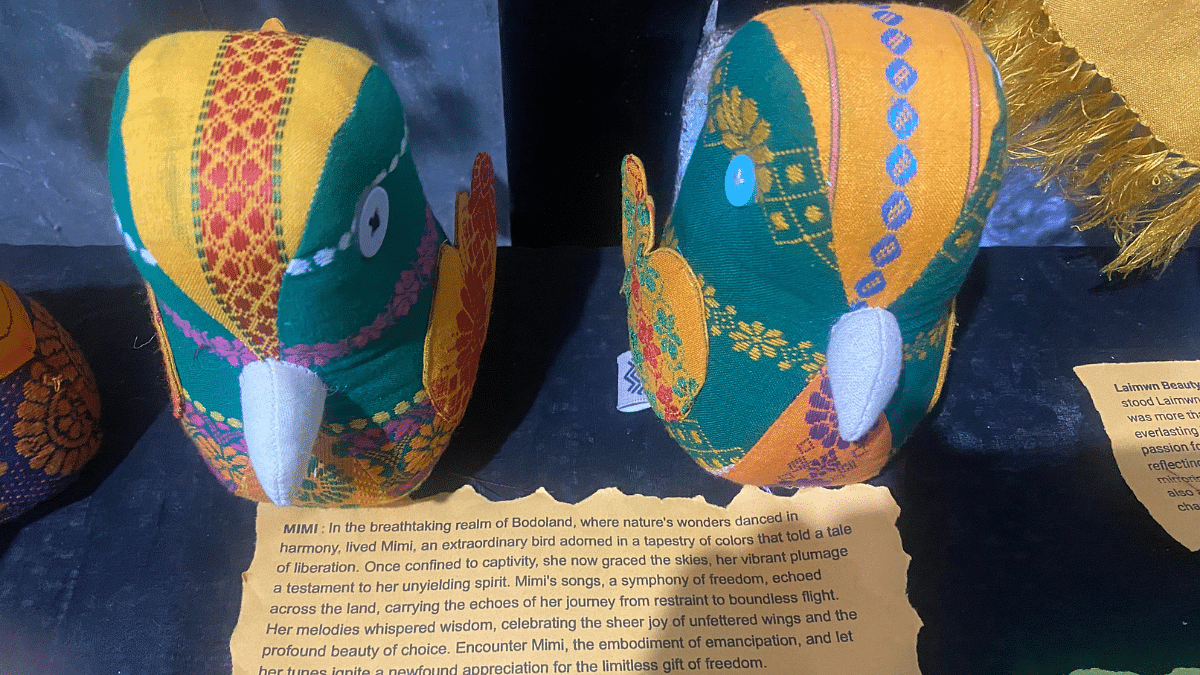
Another story was about a maverick with dishevelled hair. “At every wedding, he would dance, as in a fervid trance, as if he was in his own world and no one was watching,” he says.
Kirat never became an engineer. In 2014, he graduated with a degree in Animation and Film Design from the National Institute of Design (NID), Ahmedabad. Years later, in the midst of the Covid–19 pandemic, when he was living in a modest city apartment with a few friends doing freelance projects, the dark cloud of his education loan looming over his head, he had an epiphany.
He decided to return to Rangapani to write stories and make short films about his village. But what he saw upon returning wasn’t easy to process. Now an adult, he could see the hardships, poverty, frustration. The youth of Rangapani were getting increasingly disillusioned about farming, the traditional and primary means of livelihood in the village.
“I felt that our culture was slowly disappearing. People were migrating to big cities to work as labourers. Some were coming back dissatisfied. Even if you get an education, there aren’t many job options other than joining the Army. The Bodo community has a rich culture, and farming, folklore and artisanry are intrinsic parts of it. I wanted to celebrate things like our traditional attire, way of life, and rice fields through something everyone can relate to, and in the process, create employment for the community. I wanted the children of our village to know the stories we grew up with, otherwise, all of it will disappear,” says Kirat.
And that is how the 32-year-old animation artist became the toymaker of Rangapani. In 2021, Kirat founded the Zankla Project, a startup that creates handmade heritage toys, each of which has a story to tell. Some of these toys are inspired by the characters in his grandmother’s stories — like Mimi, a mythical bird that croons songs about wisdom and freedom, and Zara Pagla, a maverick with a mop of black hair and a fondness for dance and song. Others are inspired by characters from his village.
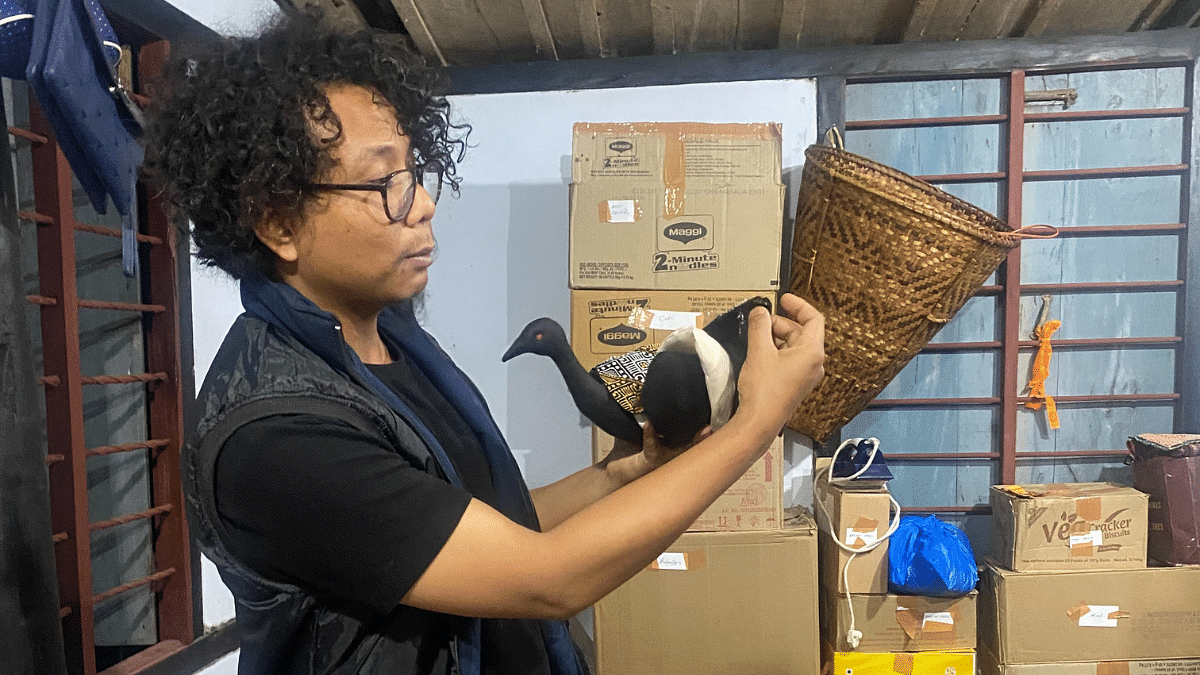
Then there is Bodo Jwhwlao, a Bodo warrior who fights passionately for his rights, Ada Hongla, a master of farming, fishing, and craftsmanship, Gambari Sikla, a Bodo woman freedom fighter who fearlessly battled the British, and Gowdang Rani, a queen who empowers Bodo women to preserve their heritage. There is also Laimwn, an embodiment of the women from Kirat’s village who set up their own beauty parlour and became financially independent.

While Dode and Jarow wear the dokhona, the traditional attire of Bodo women, Ada Hongla wears the aronai phawri, a type of Bodo headgear, and carries the khobai, the native fishing tool.

Also read: ‘Yams over grenades’ in Assam. Samir Bordoloi & his green commandos make farming cool again
Then to now
Today, almost three years after this social enterprise officially took off, Kirat has 10 people in his core team, all of them from the village. Six are women, and among them are three graduates. Working at the Zankla Studio has made them earning members of their family, just like their husbands. Kirat also helps other members of his community earn through smaller projects, even though they are not officially part of the startup.
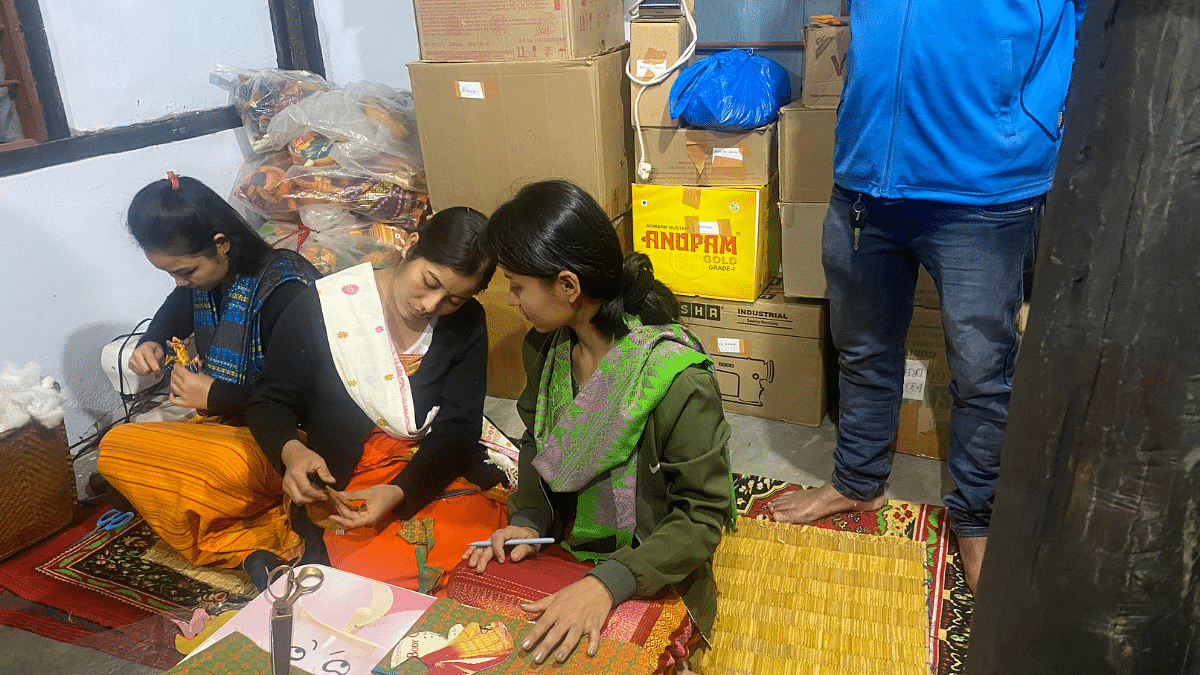
One of the biggest fillips to his project came in the form of a Green Hub-Royal Enfield Conservation Grants programme for 1.5 years — which seeks to support youth from indigenous communities who are engaged in or aim to engage in community-based conservation and livelihood projects in the Northeast.
As part of its Corporate Social Responsibility (CSR), Royal Enfield aims to build both socioeconomic well-being and ecological security through youth and community ownership at the local level. “The aim is to create a support system for local communities — going beyond the programme funding. Our social mission works with youth like Kirat from 100 communities across the Eastern and Western Himalayas in building resilience by helping them own their stories and unique cultural heritage,” says Bidisha Dey, executive director of the Eicher Group Foundation, Royal Enfield’s CSR arm, speaking on the grants programme.
Zankla Studio began full-fledged daily operations in November 2022. To date, they have made close to 4,000 toys, 70 per cent of which have been sold. The toys are bought by local residents for their children, but they have also caught the eye of customers from across the country, so Zankhla Studio has been receiving orders for personal and corporate gifting through their website and Instagram account.
Also read: India’s cultural renaissance has begun. IGNCA leading it with Vastu, Vedas, and ‘new’ history
At the workshop
The Zankla workshop is a rickety house set up in Rangapani. As Kirat explains the operations, the women are hard at work on the sewing machines, their pedalling feet producing a rhythmic thrum, interspersed with giggles as they remain deep in conversation.
The electricity comes and goes, but the work never stops. At the window is a group of local children looking in, enraptured by the process.
“Our community has a history of turmoil, so I grew up in that environment. Like many others, I went through an identity crisis, and even faced racial discrimination in big cities,” explains Kirat as he carefully rearranges the brightly coloured heritage toys on display.
Each toy on display has a note with a backstory. Scraps of fabric lie in piles everywhere, all to be reused in the next lot. While the toys are made of mostly sustainable materials, Kirat is working on ideas to make them completely environment-friendly.
Asked what she likes about her job and what she does with the money she earns, Nijwm Daimary, 25, who is expecting her first child but has not missed a day of work, bursts into giggles. Shyly, she says she enjoys it because she gets to spend time with her friends, and though she does not earn as much as her husband, she gets the chance to use the money to buy small things for the house.
Kirat’s parents watch curiously as the work goes on seamlessly. His mother studied till Class 10 and his father is a retired school teacher.
When they are out of earshot, Kirat says that their struggles are a big reason he felt the pull toward doing something for his community.
Magur & Two Face
Kirat’s educational and professional backgrounds have played a key role in the designing of the toys, each of which is highly detailed in its features. Back in Ahmedabad, he and his friends would design logos, pitch decks and animated explainer videos for corporate firms, NGOs and even PhD students.
Mounted on one of the walls of the workshop is a plush version of the majestic magur or walking catfish, embroidered in red and gold. Though it is a toy, none of the features of the fish, right down to its nasal barbels, are left out. Despite its sting, encounters with the magur are always a source of amusement to the fisherpeople, Kirat says.
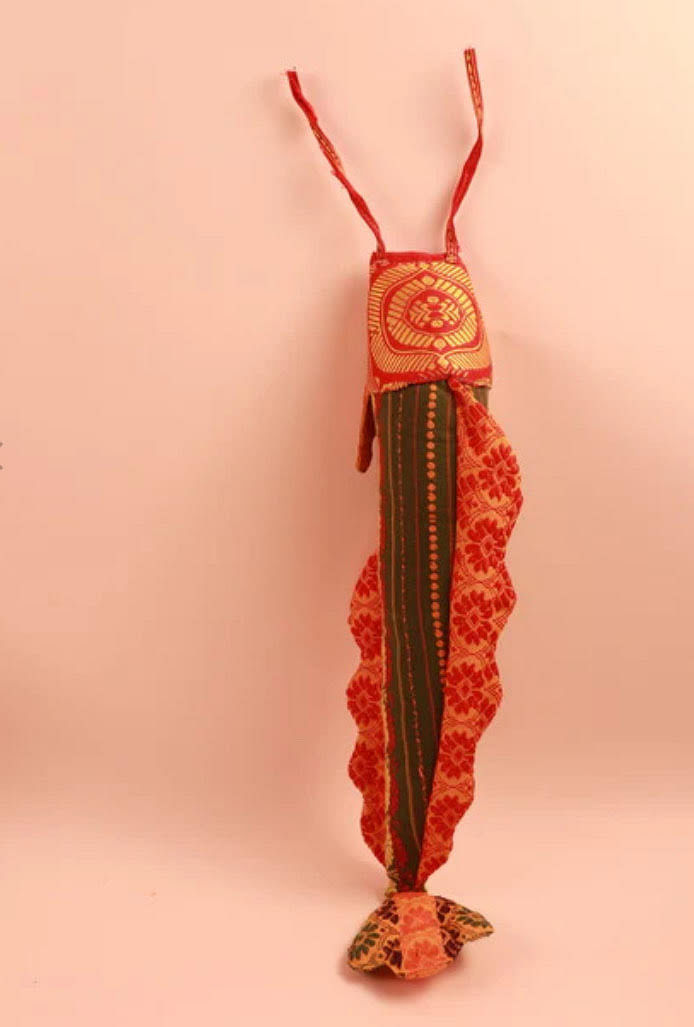
The Kaziranga rhino toy is a homage to the animal’s cultural significance. There are also toy versions of the endangered wild water buffalo and the critically endangered Bengal florican.
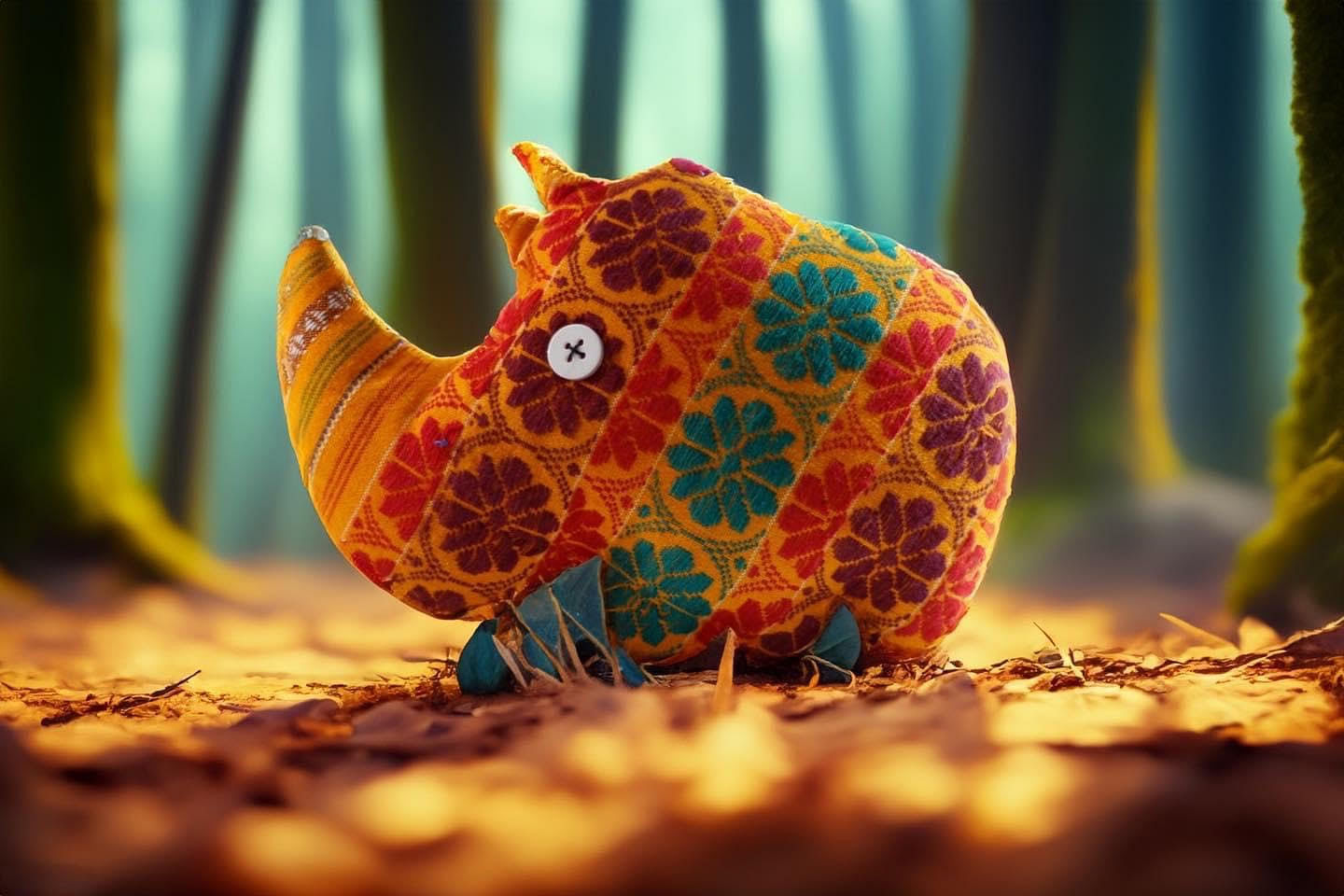
Among these masterpieces, one singularly stands out, and that is Two-Face.
When Kirat was invited to a seminar at the Lokopriya Gopinath Bordoloi Regional Institute of Mental Health (LGBRIMH) in Assam’s Tezpur last year, he created Two-Face.
No, her backstory is not that of a backbiter. She literally has two faces. On one side, her eyes are clamped shut, her pink lips curved downwards into a firm frown. But turn her around, and she’ll flash you the most dazzling smile.
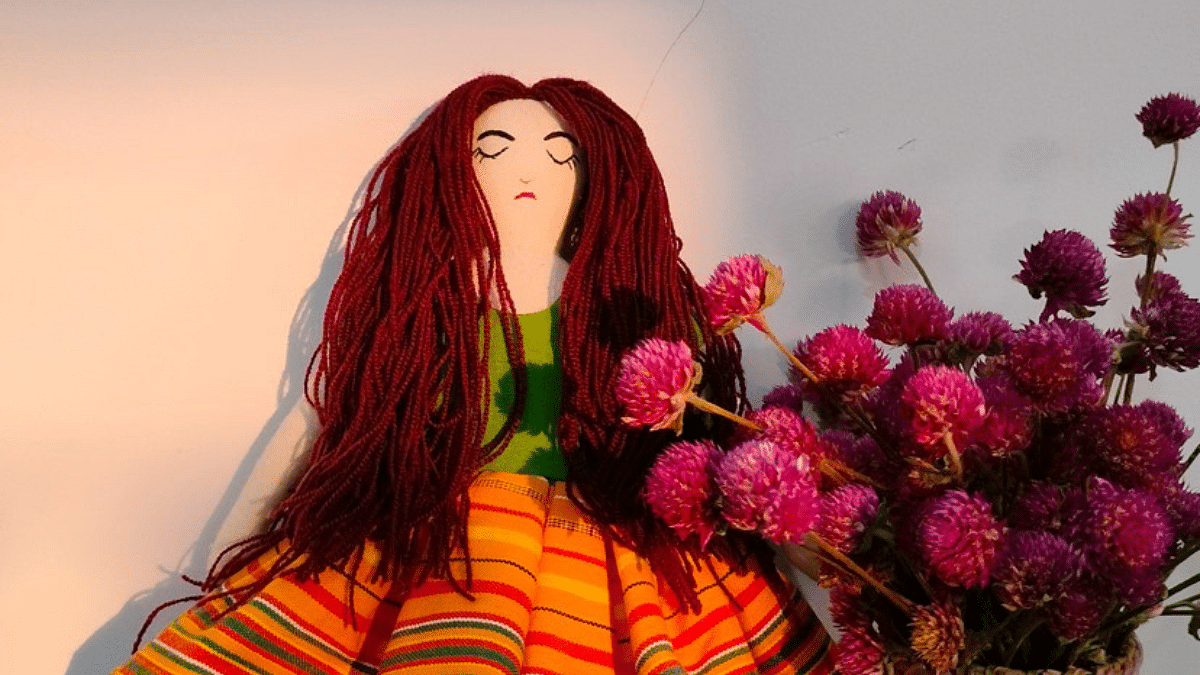
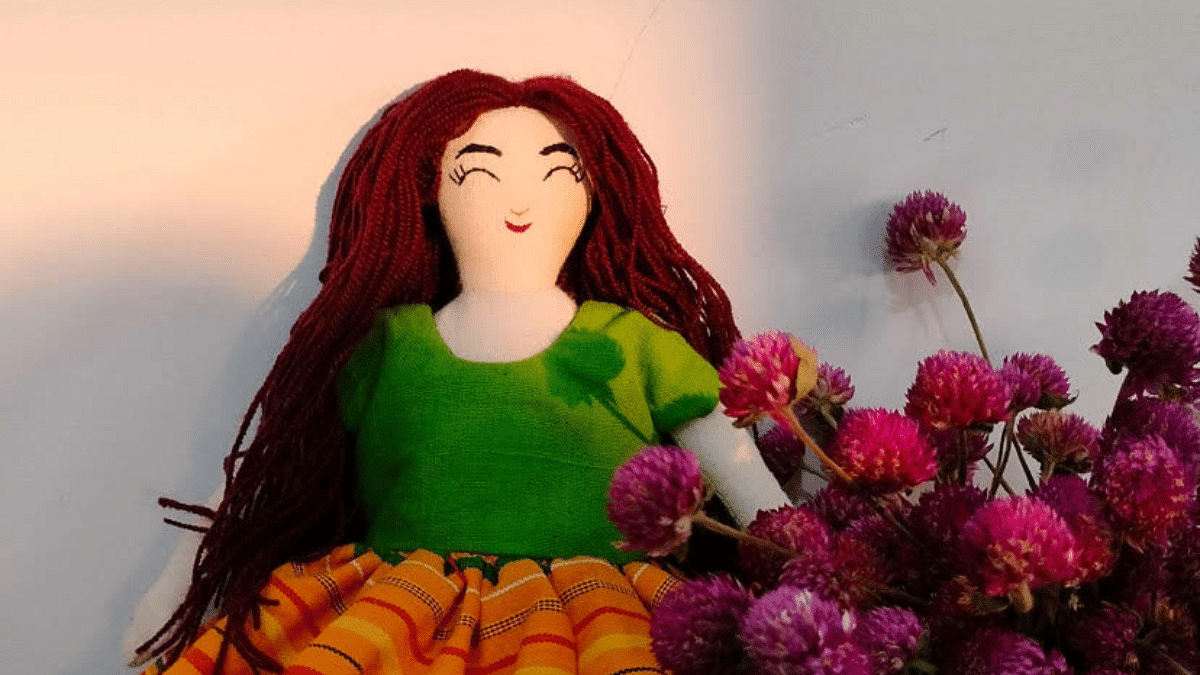
Kirat created her to teach children an important lesson, possibly the simplest one of all, when you are too young to even know what mental health is — it’s okay to feel both happy, and sad.
(Edited by Humra Laeeq)


